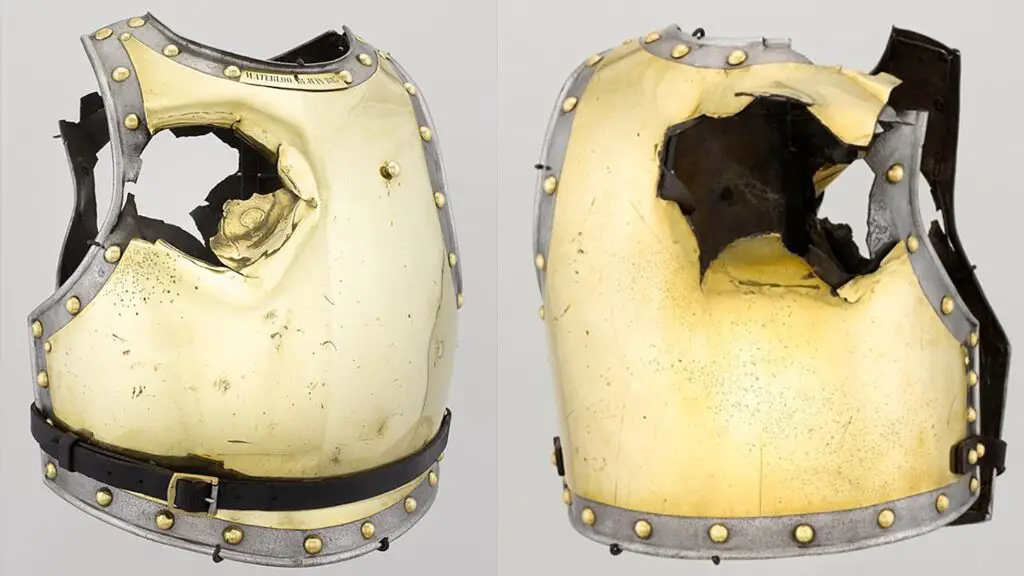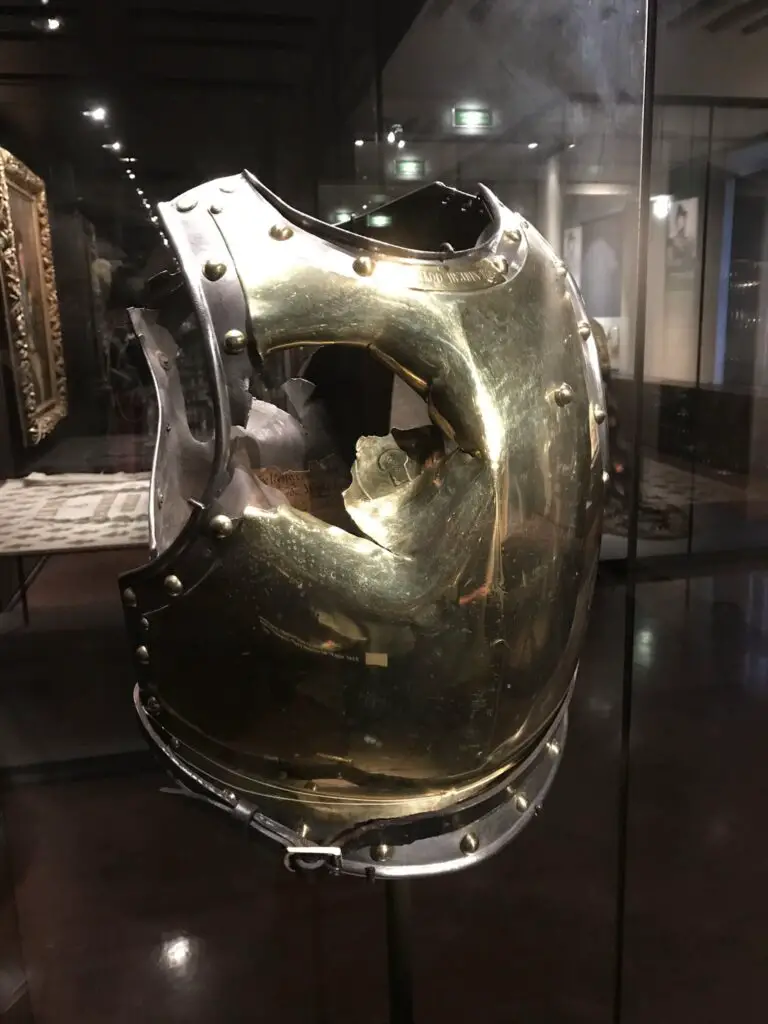The internet can make you or break you, sometimes you get it right, sometimes you can get it wrong. Sometimes people within companies hit the ‘send’ button without really checking their work.
That’s the only possible explanation for the online hilarity created by a photo sent out by the Musee de l’Armee in Paris, promoting an exhibition of war memorabilia from the Battle of Waterloo, the conflict that put Bonaparte in his place and sent him scurrying off in defeat.
Content

Museum Mistake
One of the pieces of armor is a breastplate worn by a young French soldier, Antoine Fauveau. There is a significant hole in the front on the right side, not over top the heart but not far from it. The gaping hole goes right through the armour and exits on the rear side.
Museum staff made the mistake of explaining that the young man had been “wounded” by the hit from a nine pound cannonball. Immediately, social media users from across the globe seized on the understatement as an error of epic proportions.
They took great glee in making fun of the video and its caption, as the size of the hole makes it clear that the poor young man must have died, not simply been wounded. Other humorous theories abounded online about his death, including this witty comment from one user: “The CDC (Center For Disease Control in Atlanta) ruled he died from the Black Plague.”
Napoleon
Some social media subscribers compared the soldier’s wound to the knight in “In Search Of the Holy Grail” film by the Monty Python troupe. In the movie, as a knight battles and jousts with another warrior and loses limb after limb, he keeps pronouncing, “Tis but a scratch!” until there is nothing left but a torso and head.
The battle, which ushered in the end of French imperialism and saw Napoleon exiled to Elba, happened in Waterloo, Belgium, in 1815.
Reactions by those online who saw the video and leapt on the opportunity to poke fun was not welcomed unanimously by all viewers.
As seems to always be the case these days, one individual took exception to people having a laugh at the expense of the man who died while fighting. Tony Pollard is a professor of conflict history and archaeology at the University of Glasgow. He found the jokes to all be in poor taste, and said so on his Twitter feed.
“It might not seem so funny if we knew more about the man and his death,” Pollard sniffed. He went on to say that Fauveau would have endured “massive trauma,” and that the breastplate may have temporarily held his torso and organs together.
Open Grave
Ultimately, however, he would have had an agonizing death, according to Pollard. His body then would have been chucked into an open grave filled with the bodies of many soldiers.

It’s astonishing that Fauveau was ever identified. But because he was carrying a pay packet of sorts with his name on it, officials eventually were able to ascribe a name to the breastplate. Other details found on him said that he was a blue-eyed, fair haired young man who was about to be married.
Of course every soldier’s death in war is a tragedy. But it’s also a tragedy that, particularly in these unsteady times, a little humour found in something that occurred so long ago is criticized as insensitive and uncaring. No doubt the Tweets were meant in good fun, and certainly they are a refreshing change from the mean-spirited, polarizing harangues we see on every issue nowadays, from politics to popular culture.
Plot Twist
Is History’ Most Iconic Piece of Armor a Fake?
What started off as a social media post that went viral has led to a massive question – is this iconic piece of armor and its famous story actually fake.
Will this story going viral it piqued the interest of former Scotland Yard detective David Videcette. His experience in solving crime, ballistics and gunshot injuries leads him to believe that this piece of armor and the story behind is completely fake and historians, researchers and the public have been conned.
Videcette has measured both the entry and exit holes which leads him to state FAKE. For example, both entry and exit holes are too big for the cannon used on the battlefield that day.
He goes on to explain: It’s well known that the largest piece of artillery the British and its allies had on the battlefield of Waterloo was a 9lb cannon. These 9lb cannons fired solid metal cannonballs of four inches or 10cm in diameter – too small to have made a 12cm entry hole in the breastplate of the cuirass. The French had larger artillery on the battlefield that day, but even their largest cannon fell slightly short of being able to make a 12cm hole.
Scotland Yard Detective
The former detective adds even more facts to the story that has upset the museum and the narratives of historians and academics alike, and that is the fact that the man inside the armor on that fateful day wasn’t in fact killed.
Alexander Cavalié Mercer describes the battlefield on the evening of 18 June 1815: “It was a poignant sensation, standing in the nocturnal silence and gazing on the battlefield, which during the day had been a theatre of fighting and now was so calm and silent, the actors spread on the bloodied soil, their pallid faces turned to the cold rays of the moon which reflected off the helmets and breastplates! Now and then, a figure would rise up from the ground, to fall down again with fresh cries of desperation. Others raised themselves slightly and pitifully, or having been less injured, stumbled over the battlefield looking for help. Many of these I followed with my eyes became lost in the distance. But many – alas – after having staggered a few steps, fell to the ground again, never to get up again. It was harrowing! But I still watched.”
The mystery continues. Inside the padding of the armor was a service booklet in the name of François Antoine Fauveau, 23 years of age, a dairyman by profession, who was incorporated into the 2nd rifle regiment in May 1815. His height – 5’8.
His statement of service records him as having ‘a long face’: “a large forehead, blue eyes, aquiline nose, small mouth, a face marked by freckles”.
Another Article From Us: Battlefield Relic, The Only Witness Left Standing to the Battle of Culloden
Interestingly, the family have always insisted that this wasn’t François, it was in fact his brother who was killed at Waterloo.





